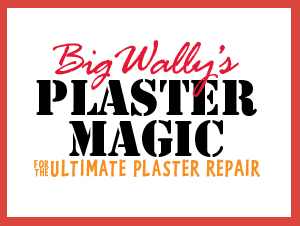September 26th, 2017
PLASTER MAGIC IS THE ONLY ONE THAT WORKS! #1
ON THE SUBJECT OF CONVENTIONAL CONSTRUCTION ADHESIVES–
Just because the technical material says it works on plaster doesn’t mean it works inside the dusty historic plaster/lath system. Plaster Magic is the ONLY one that works.
Instruction #1. The fine print says some variation of:
Ensure surfaces to be bonded are clean, dry, structurally sound and free of frost, dust, grease, oil, and other foreign contaminants.
Application: surfaces must be clean, dry and free of foreign materials.
Ensure surfaces to be bonded are clean, dry, structurally sound and free of dust, grease, oil, and other foreign contaminants.
Knowing the plaster/lath system and how the components interrelate over time is important to consider how long your repair will last.
Old buildings expand and contract of the years, often from the effects of temperature and/or humidity. The effect of this movement upon the plaster/lath system is the lath acts like a saw, abrading the plaster (and keys), creating lots of dust and sand. This need to be compensated for in the repair. This is where the Plaster Magic system shines, what it was designed for doing. The surfaces the adhesive bonds to are firm, consolidated, solid and flexible with a soft shoulder (read no shear line). The Plaster Magic system moves with the historic building, keeping the plaster in-place and well attached. Assuming there are no other structural issues, plaster repaired this way will last forever
PLASTER MAGIC IS THE ONLY CONSTRUCTION ADHESIVE SYSTEM DESIGNED FOR THE SOLE PURPOSE OF REATTACHING HISTORIC PLASTER BACK TO ITS LATH CREATING A STABLE REPAIR.
DESIGNED TO WORK IN THE MOST DIFFICULT ENVIRONMENT, PLASTER MAGIC DELIVERS AS PROMISED.

